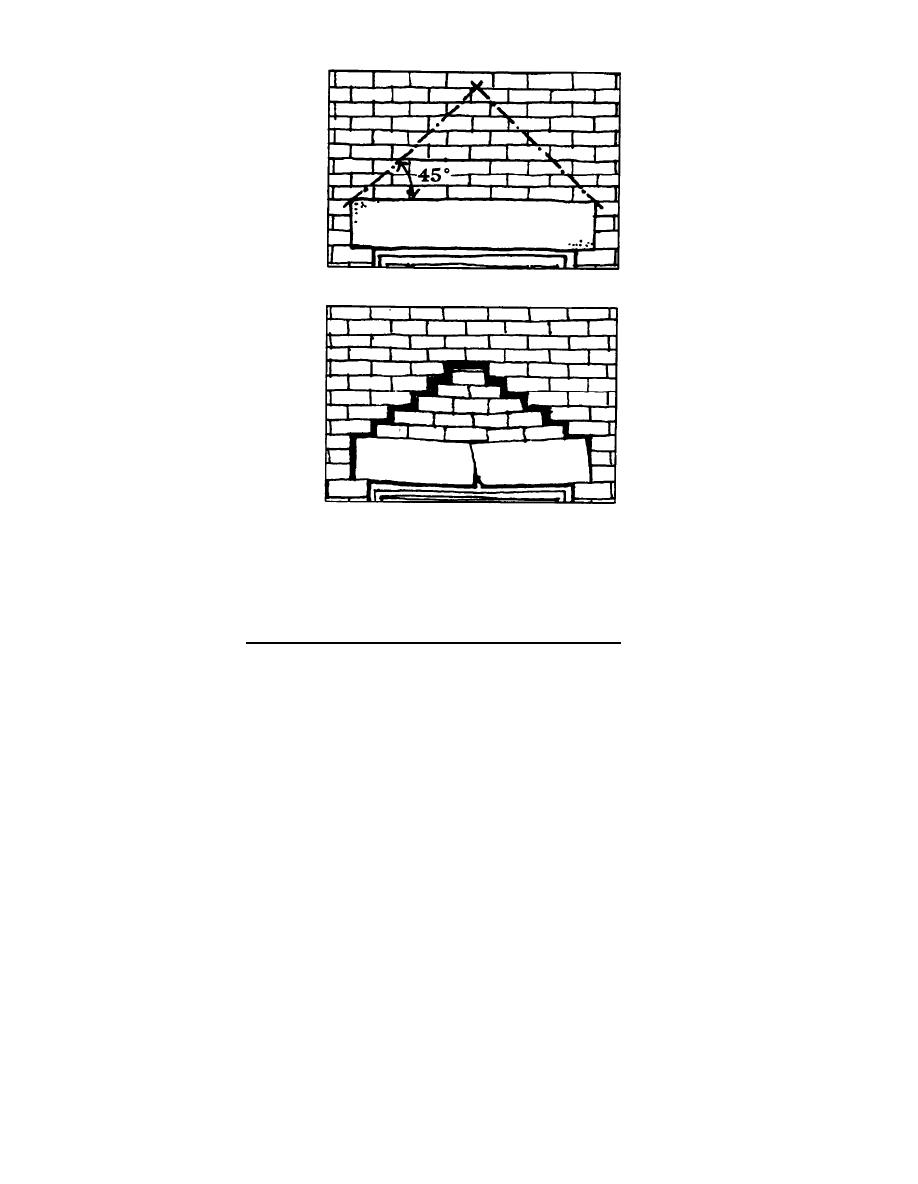

Custom Search
|
|

|
||
 The Collapse of Masonry Lintels Indicates a
Figure 4-14.
Structural Fault.
(Source: Respectful Rehabilitation: Masonry, The Preservation
Press, National Trust for Historic Preservation)
to be flexible yet durable. The conditions that should be abated
or prevented in these materials are corrosion, abrasion,
movement, and impact.
4.6 MECHANICAL SYSTEMS/HVAC. Most historic buildings that are
used as living or work places need modern heating, cooling, and
ventilating systems, as well as up-to-date kitchens and
bathrooms. The most important consideration in installing these
systems is not how to hide them, but how to protect the historic
fabric of the building. You may find it surprisingly easy to do
both if you take time to examine the building closely before
beginning a new installation. Closets, pantries, and service
areas in basements and wings can often be used for modern
bathrooms, kitchens, and utility rooms. Many 19th century
buildings were built with central heating and ventilating systems
that can be adapted for today's air conditioning or wiring needs.
Ducting for central A/C can sometimes be installed using old
chases, or floor vents may be added for ducts rising from the
basement. Other locations to consider: between roof deck and
ceiling (but only if new roofing is being installed) ; within roof
4-27
|
 |
|
 |
||